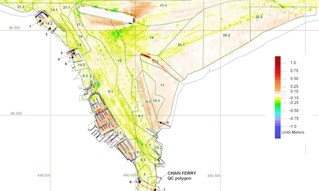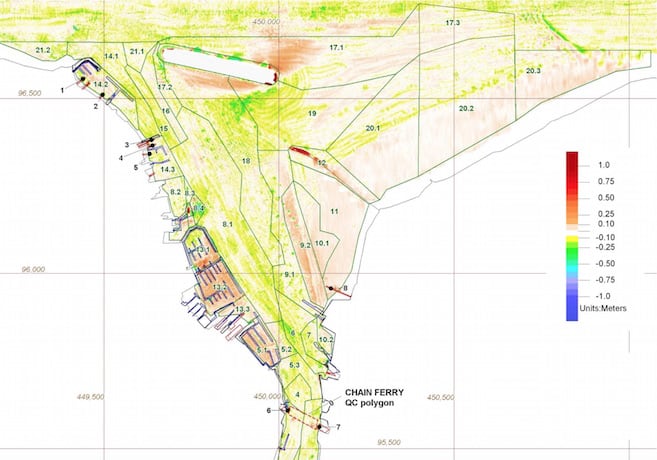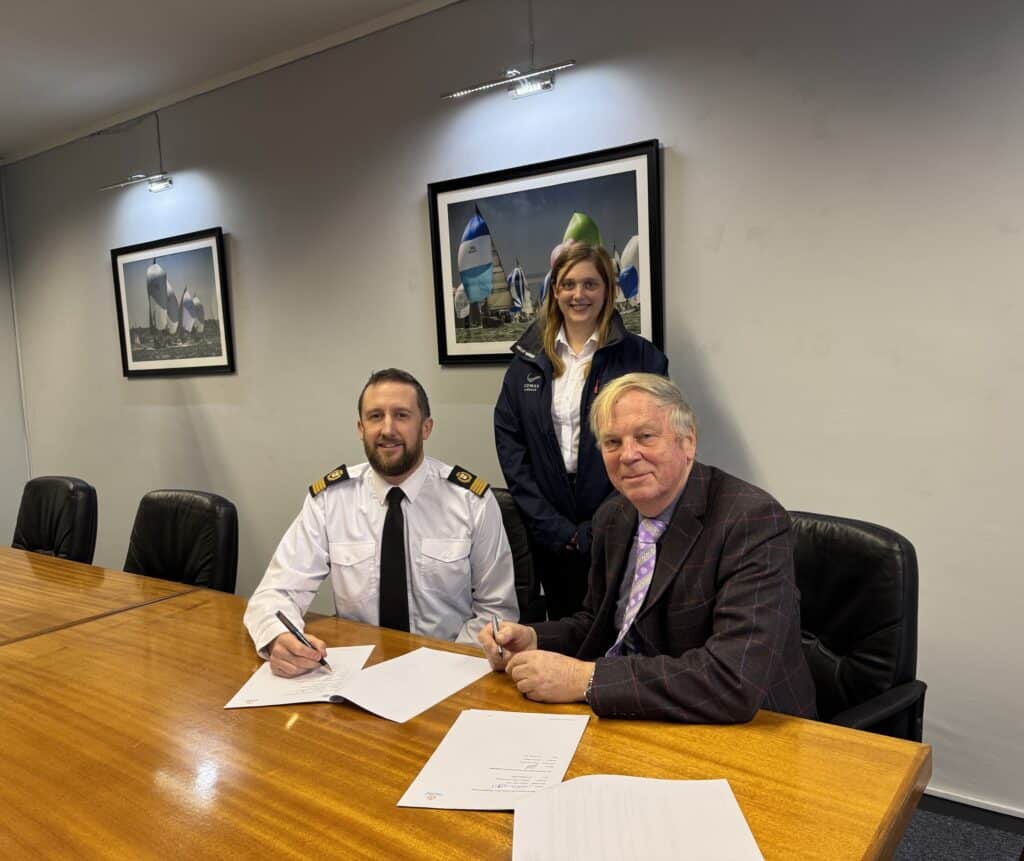
In brief: Cowes Harbour Commission (CHC) aims to develop a ‘Sustainable Maintenance Dredging Management Plan’ by end 2017, which will be suitable for, and involve all dredging stakeholders in the harbour. Such a plan will bring a number of benefits to stakeholders including cost savings and a streamlined consenting process. All dredging stakeholders will be invited to contribute to the development of the ‘Sustainable Maintenance Dredging Management Plan’, with a forum planned for 5th May, which will include a presentation of Dr Rob Nunny’s studies. See below for further information.
CHC is committed to the sustainable management and conservation of the harbour, estuary, and local environment and continues to work with harbour users and statutory authorities to ensure that the balance between the use of the estuary and its environment is maintained.
The plan to develop and agree a ‘Sustainable Maintenance Dredging Management Plan’ for the Medina Estuary was first proposed in CHC’s Strategic Framework of 2011 and has been reiterated in CHC’s current Strategic Plan 2016-21. The Commission’s aim is to develop a sustainable and cost-efficient Maintenance Dredging Management Plan in partnership with stakeholders, which is underpinned by long-term monitoring and promotes alternative dredging methods. Under the proposed Plan, maintenance dredging activities would be coordinated to maintain, as far as is possible, a sustainable balance between navigational requirements, harbour improvements, and natural estuarial features. The Plan could bring considerable benefits to stakeholders, including cost efficiencies through the roll-out of partnership surveying and a CHC-facilitated consenting process, as well as benefits to the environment with a review of dredging methods utilised.
The Commission is now in a good position to start developing a Maintenance Dredging Management Plan as a result of the increased data and detailed information available in reports compiled by estuarine sedimentation consultant Dr Rob Nunny of Ambios Environmental Consultants Ltd. Dr Nunny’s first report of May 2016, ‘Medina Estuary Sedimentary Processes’ provided a conceptual understanding of the harbour both historically and up to the present day.
A second recently completed report, ‘Sediment Management in the Medina Estuary – Monitoring Results 2016’, analyses a year’s worth of robust data collection, including multi-beam surveys of the whole harbour, which give a 3D image of the estuarine basin. This report had the objectives of identifying the different sediment sources and energy processes that produce dispersion of mud and sand through the estuary, mapping local variability in estuary bed erosion and accumulation, and quantifying sediment flux over time throughout the estuary. The key findings were as follows:
1. The report covers a full 12-month period (December 2015 to January 2017) and is based on a wealth of good quality data.
2. The main source of sediment to the Medina Estuary is generated over the winter in the Solent and English Channel.
3. The high winter levels of sediment suspension in the Medina reduce to low levels in the summer.
4. Data from water turbidity monitoring and bathymetric surveys confirm that this 12-month period has seen a lower amount of sediment accumulation in the estuary than has been the norm in recent decades.
5. The area from the Outer Harbour to the Chain Ferry saw a reduction of annual mud accumulation compared to historical mean rates, mainly evident in the marina basins, which are man-made sediment sinks. This is consistent with a reduced overall influx of suspended sediment to the Medina in 2016 when compared with previous years. The eastern margins of the Outer Harbour inside the Shrape Breakwater continue the trend of re-alignment and accumulation of sediment, evidenced over approximately the last 10 years. The immediate breakwater zone and the Solent shore east of the Medina saw a small change in the sedimentation pattern, with slight sand erosion being replaced by slight sand accretion.
6. The upper estuary saw negligible net change in bed levels as a result of natural processes.
7. Vessel movements impact the turbidity levels and cause scouring similar to the impacts from local storms; however, the role of both vessel traffic and local storms is small compared with the effect of tidal transport of mud.
8. The sediment-monitoring programme is proving effective and useful as a management tool and should be continued.
The full report may be viewed on the CHC website in the Estuary Sedimentation Management section.

Figure 15 from Dr Nunny’s Sediment Management in the Medina Estuary – Monitoring Results 2016. Changes in seabed level 2015 to 2016 from comparison of multi-beam surveys (corrected version). Outer harbour. Slipway sites are black numbers on land with arrows connecting to slipway.
Dr Nunny’s report, providing independent evidence of sedimentary processes in the harbour and estuary, will now be utilised to inform the development of a partnership Sustainable Maintenance Dredging Management Plan for Cowes Harbour. The first steps towards this will include a presentation and forum for dredging stakeholders on Friday, 5th May, time and venue to be confirmed. At the forum, a presentation is planned on the basic hydrodynamics and evolution of the Medina estuary, a review of sediment management monitoring reports, and discussion on the development of a stakeholder Dredging Management Plan covering surveying, consents, dredging options and partnership working. CHC will be contacting dredging stakeholders in the near future with further information on the forum; in the meantime, please contact the Harbour Office for any enquiries.



